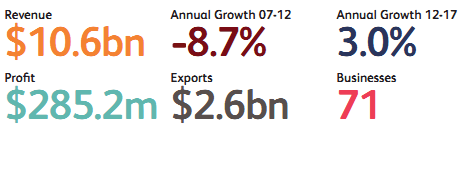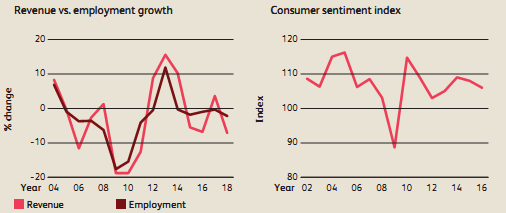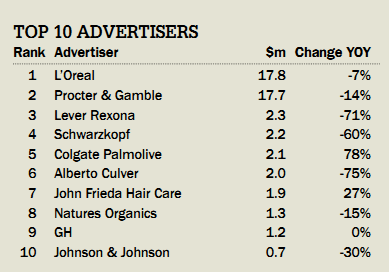The cosmetic industry in Australia is characterized by high volumes of sales. It is estimated that the industry records an average of five billion Australian dollars every year. This industry exports many of the cosmetic products to various countries, and it is estimated that the exports earned from this industry are nearly $400 Australian dollars each year.
The market earnings from the Australian population are also high with every individual spending on cosmetic products. The industry exhibits continuous growth characterized by numerous market opportunities. Among the major cosmetic products are hair care products where the Pantene shampoo is a leading product. This product is credited as a bestselling hair care brand and the market in Australia is made up of a variety of Pantene shampoo products.
Like any other Australian cosmetic product, the Pantene shampoo is highly credited because of the clean and green reputation. This shampoo has been shown to cleanse thoroughly and at the same time provide a lasting lustrous shine on the hair. It has also been credited for providing a nice moisturizing effect on the scalp.
The major international markets for the cosmetic products from Australia are: China, USA, New Zealand, Japan, India, South Korea, and Singapore. However, the contribution of the local market is relatively high. Reports from the Bureau of statistics in Australia indicate that every household in Australia spends nearly millions of dollars on cosmetics (Australian Center for Retail Studies 1-7).
The cosmetic industry is dominated by various stakeholders whose entry into the Australian market is highly driven by the high ready market for cosmetic products.
The rapid emergence of new entrants into the Australian cosmetic industry depicts the ease of entry into this market. Other than Pantene shampoo, which is manufactured and marketed by Procter & Gamble, new entrants into the cosmetic industry in Australia include Jurlique, Red Earth, Priceline, and Lush. The existing barrier to the entry of new operators in this industry is associated to the structure of ownership in this industry (Australian Center for Retail Studies 1-7).
The existence of franchises in the ownership of this industry has been shown to be a key characteristic of the type of industry ownership. The amount of capital investment for the successful operation of a cosmetics firm in Australia is relatively costly. This possibly shields existing operators from the threat of other new entrants.
The implicated costs are related to advertising and the payment of royalty fees. Besides generating large volumes of revenue, the cosmetic industry is also credited for creating numerous job opportunities. For instance, the marketing of Pantene shampoo in Australia is conducted by various agencies that have also incorporated numerous retail outlets to handle the product distribution. The figures below illustrate the cosmetic industry statistics in Australia.


Major competitors on the Australian Market
The market share of the Pantene shampoo in Australia is relatively large compared to a majority of rival products. This is despite that the cosmetic industry in Australia is very competitive. The main traded cosmetic products are from L’ Oreal with a 34% market share. Other major stakeholders include Johnson & Johnson with a market share of 33%.
Pantene shampoo marketed by Procter & Gamble falls under personal washes and bath additives, which are rated at five percent of the market share of cosmetic products. On average, Procter & Gamble enjoys a good share of the market, and it is ranked in the seventh position among the best cosmetic companies in Australia. The hair care market in which Pantene shampoo belongs is ranked in the 26th position with regard to consumer expenditure.
The marketability of this product is highly driven by the efficiency of advertising strategies (Nielsen Ad News 1-8). As depicted in the figure below, Procter & Gamble has invested heavily in the advertising of its products via the use of various approaches. This indicates that the marketability of Pantene shampoo is relatively high and consumers have a wide recognition of this product.

The marketing strategy for Pantene shampoo is based on the hypothesized observation that a majority of users of this product, especially women highly appreciate the essence of healthy hair. Because many women believe that their hair is bound to be damaged following exposure to different products, Procter & Gamble was motivated to introduce Pantene shampoo on the market with the hope of addressing the various challenges to the hair and scalp among women.
The use of advertising in the promotion of the marketability of this product is a strategy that Procter & Gamble has effectively developed across Australia and the rest of the international market. The main challenge to the marketing of this product has been the relevance of the marketing slogan “hair so healthy it shines”. Procter & Gamble has been examining various strategies geared at improving the relevance of this slogan on the Australian market.
Challenges on the Australian market
The main challenge in the marketability of hair products in the Australian market is the ability of a product to exhibit superior quality compared to its substitutes. This is related to the nature of women who are the main consumers of these products. A majority of women are very skeptical with the emergence of new products on a market. Because of the benefits depicted in most adverts, women are highly lured into purchasing products that may likely not provide any of the benefits indicated in the adverts.
Marketing Pantene shampoo in Australia mainly focuses on the health of hair. Using the later as its brand equity, Pantene shampoo has used various beauty queens to promote the market acceptance of its products. However, because of the competitive nature of the Australian market, a majority of rival companies in the hair care industry are also adopting the use of similar strategies.
The existence of an ample political climate in Australia is an added advantage for investment, which implies that the available market share is eyed by numerous entrants. This is a challenge to existing operators but an opportunity for consumers who expect a wide variety of products with the entry of more operators. Existing operators like Procter &Gamble are constantly changing their strategies to overcome the emerging challenges.
For instance, Pantene shampoo in Australia has shifted toward the promotion of a treatment product called the three minute miracle. The launch of this product in the Australian market has greatly enhanced the market share for Pantene shampoo. The treatment product is very small, but it has offered the largest market segment for Pantene shampoo as a brand in Australia. This is related to the value attached to treatment and shampoo among women (ADAsia 1).
Because the use of the treatment, which goes hand-in-hand with the shampoo results into visible difference in the appearance of the hair, Pantene shampoo is highly purchased in Australia. The use of this new product to promote the marketability of the shampoo equally has been enhanced by the performance slogan that it came with. The use of the three minute miracle is believed to repair hair damage that may have occurred for over three months in three minutes.
This is an indication considered unbelievable among many of the product users. At the launch of this product, the main challenge on the Australian market was how to address the believability of the consumers in the performance slogan. However, through the use of global agencies, it was possible to design and launch a campaign that effectively promoted sale of the new product and a variety of Pantene shampoo products (ADAsia 1).
The launch of the new product on the Australian market occurred at the time of the financial crisis, which saw the emergence of various price wars and competition from rival products. However, the total sales for Pantene shampoo continued to rise across the Australian market.
The brand recognition and general acceptance in other markets also increased with the introduction of the new treatment on the market. The launch of the new treatment is highly credited for resulting into the highest volume of sales for Pantene shampoo range of hair care products. In Australia, the launch of the new treatment is believed to have shifted the marketability of Pantene shampoo hair care products to the first position in market share.
Key Market Targets
Understanding the emerging trends in the marketability of cosmetic products in Australia is vital for the survival of Pantene shampoo on the Australian market. The cosmetic industry in this region is very dynamic and at the same time rapidly evolving (IBISWorld 1). The marketability of any cosmetic product is highly defined by the brand recognition, the innovativeness, and product promotion strategies. Pantene shampoo is highly distinct on the Australian market, especially following the introduction of the new treatment product.
The marketability of this product is also highly enhanced through the use of strong advertising strategies designed with the help of various product promotion agencies. At the retail market, the main competitors range from pharmacies, supermarkets, and salons. The market share of cosmetic products at the retail market was estimated at $13, 400 million Australian dollars in 2009 and nearly$ 14 million dollars at the end of 2010.
The marketability of Pantene shampoo highly depends on the use of retail distribution channels, such as pharmacies, supermarkets, and department stores. The existence of numerous retail outlets on the Australian market intensifies the level of competition among product manufacturers (IBISWorld 1).
However, at the retail level, there is a very stiff competition among departmental stores and most of these stores trade large volumes of Pantene shampoos. The use of retail outlets in the distribution of Pantene shampoo is an added advantage for Procter & Gamble because it tends to reduce liability for the company.
Because of stiff competition, Procter & Gamble has also incorporated various online stores to increase the marketability of its range of products. The EmporiumOnNet.com.au is a major online shopping mall where a variety of Pantene shampoo can be purchased. The shift toward the use of online marketing has seen consumers in Australia purchasing more products and at the same time increasing their knowledge of the large variety of Pantene shampoo.
The Australian cosmetic industry is highly dominated by retail driven competition in an effort to attain the largest market share (Perry 1-3). For instance, many supermarkets are increasing their space to accommodate more cosmetic products and this adds on as an opportunity for Procter & Gamble.
This is because of the value attached to Pantene shampoo and the treatment. The alarming increase in retail competition has been influenced by a drop in legislative controls related to the trade of cosmetic products. Because the government of Australian values fair trade and the use of clean and safe ingredients, Procter& Gamble has an added advantage because of its clean and green reputation.
The marketability of Pantene shampoo and other cosmetic products in the Australian market is also highly influenced by the emerging consumer trends. The rapid changes in consumer trends on this market have resulted into changes in preferences. In particular, the Australian population is undergoing rapid aging and the demand for anti-aging products has highly increased.
As opposed to the recent past where the main consumers of cosmetic products were women, the current Australian market is made up of a large percentage of men in pursuit for various grooming products. A shift toward the launch of male specific varieties in Pantene shampoos is expected to increase the market share (Elliot et al. 10).
Because of the high value attached to the use of clean and green products in Australia, changes in product ingredients have a significant impact on the marketability of products in Australia. Procter & Gamble seems to effectively understand the emerging trends in the consumer behaviour on the Australian market, especially the value attached to celebrities and the use of clean and green ingredients (Australian Center for Retail Studies 1-10).
This explains why a majority of its adverts are designed with various celebrities in mind. In addition, the Australian market is characterized by changes in shopping behaviour. Many retail outlets are under intense pressure to provide consumers with product convenience, which explains why Pantene shampoo highly relies on the treatment product to promote the rest of its products.
The entire cosmetic industry in Australia is characterized by various opportunities and challenges. The major challenges to existing operators in this industry include the looming financial crisis, the high cost of petrol, the ageing Australian population, and the high level of competition. The major opportunities in this industry include the availability of a ready market for cosmetic products and the existence of an ample political climate for investment.
In addition, the rapid ageing of the population equally adds on as an opportunity for stakeholders in the cosmetic industry. This is because anti-ageing products and cosmetic products that conceal signs of aging, such as hair products that conceal the appearance of grey hair cannot be ignored.
The existence of these challenges and opportunities on this market present various implications for manufacturers and retailers of cosmetic products. However, to survive in such a market, manufacturers, and retailers of cosmetic products will need to critically examine the emerging trends in the Australian market. This will enable them to devise effective mechanisms of meeting the changing consumer trends and at the same time enhance their ability to retain consumer loyalty.
Works Cited
ADAsia. Pantene: Making Miracles Happen. Adasiaonline. 2009. Web.
Australian Center for Retail Studies. “Australian Health and Beauty Report.” ACRS Secondary Research Report. 2009: 1-10. Print.
Elliot, Marketing – Greg, Sharyn Rundle-Thiele and David Waller. Marketing. 2nd ed. Milton Qld: John Wiley & Sons, 2012. Print.
IBISWorld. Cosmetic and Toiletry Retailing in Australia: Market Research Report. Ibisworld. 2012. Web.
Nielsen Ad News. “Australia’s Top Advertisers.” Special Report. 2009:1-8. Print.
Perry, Johns. A Cosmetic Industry Overview for Cosmetic Chemists. Chemistscorner. 2012. Web.